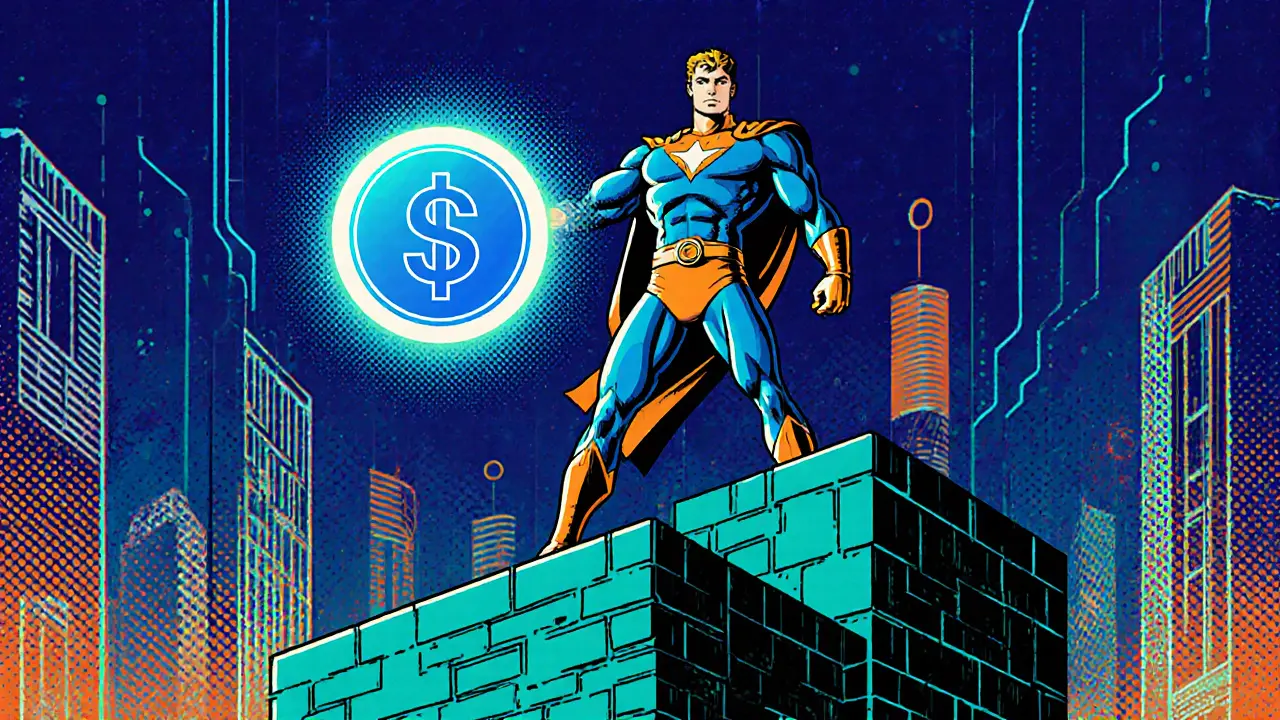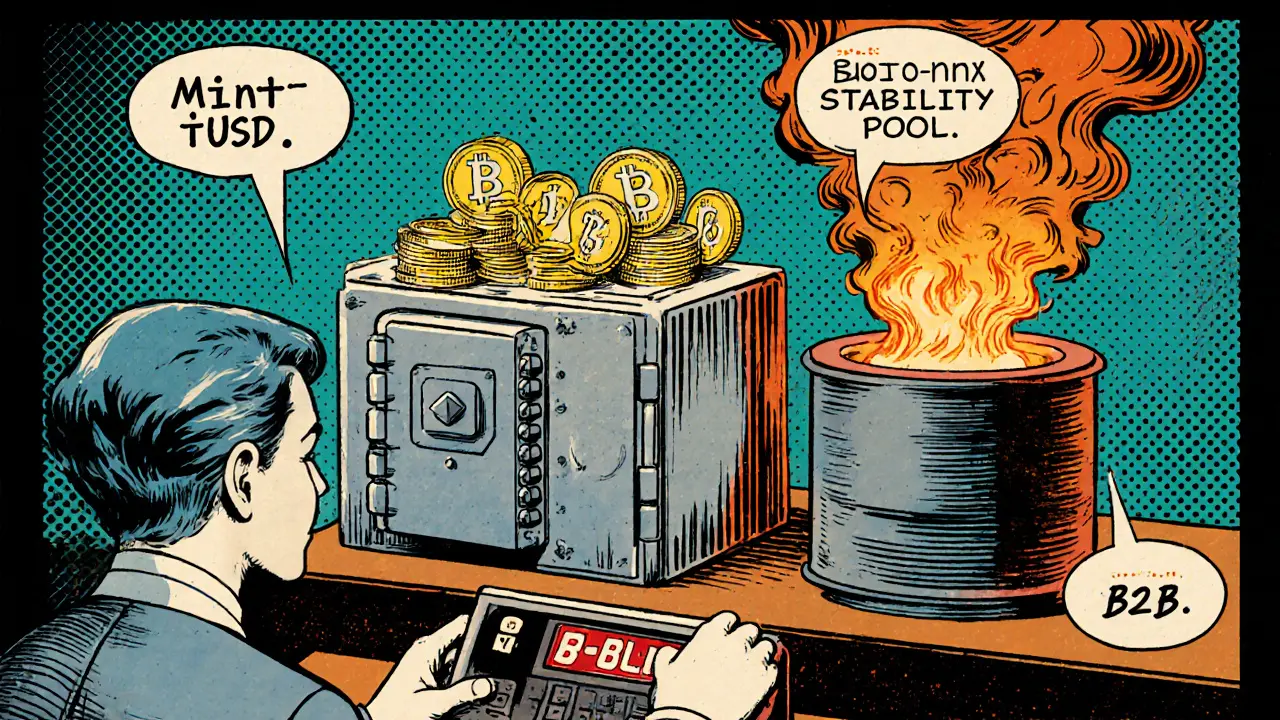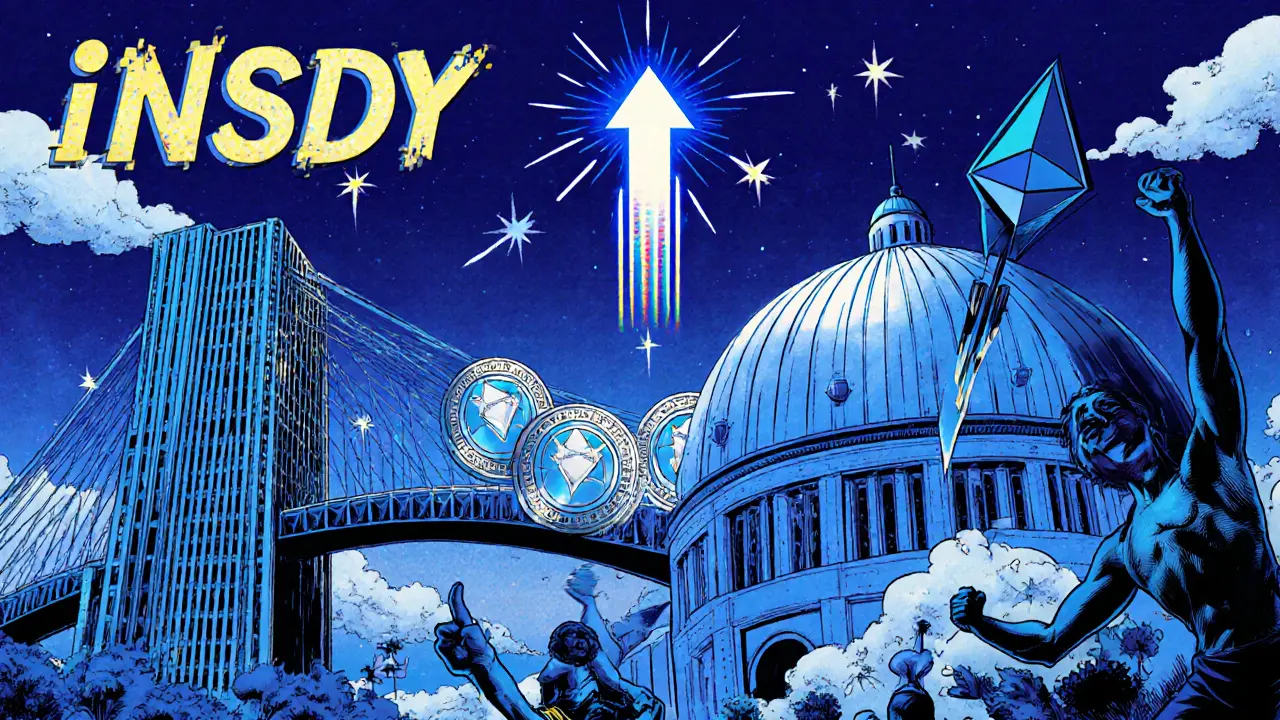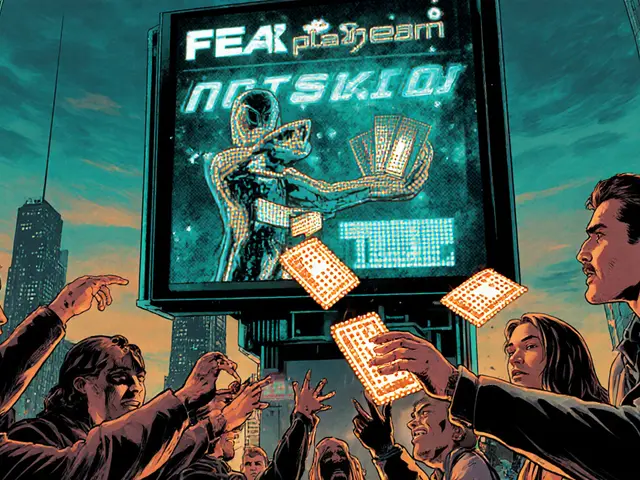
iUSD Collateral Ratio Calculator
How the iUSD Collateral Ratio Works
iUSD requires 150% over-collateralization with ADA. For every $1 of iUSD, you must lock at least $1.50 worth of ADA as collateral. This ensures stability even during price fluctuations.
Minimum Collateral Ratio: 150% (1.5x)
Current iUSD Supply: ~3.1M tokens
ADA Price Reference: $0.75 (example value, update as needed)
Your Collateral Requirements
Ever wondered what sits behind the ticker IUSD and why Cardano fans keep talking about it? The answer is Indigo Protocol, a synthetic‑asset platform that brings a stablecoin to the Cardano ecosystem. If you’re curious about how it works, what makes it different from the likes of DAI or TerraUST, and whether it’s worth your ADA, keep reading.
What is Indigo Protocol?
Indigo Protocol is a decentralized synthetic‑assets protocol built on the Cardano blockchain that lets users mint and trade tokenized representations of real‑world assets. Launched in 2023, the protocol aims to fill the gap of synthetic assets within Cardano, offering low‑fee, fast settlement and native integration with Cardano’s staking model.
Introducing iUSD - the flagship stablecoin
iUSD (ticker IUSD) is the primary stablecoin issued by Indigo Protocol. It is pegged 1:1 to the US dollar and lives as a native Cardano asset at address f66d78b4a3cb3d37afa0ec36461e51ecbde00f26c8f0a68f94b6988069555344.
Unlike algorithmic coins that rely on market dynamics, iUSD is over‑collateralized: users lock ADA or liquid‑staked ADA (LSD) in a Collateralized Debt Position (CDP) and receive iUSD tokens. The minimum collateralization ratio is 150%, meaning for every $1 of iUSD you must provide at least $1.50 worth of ADA.
How iUSD works - minting, stability and the Buy‑to‑Burn mechanism
- Minting: Connect a Cardano wallet (Nami, Eternl or Flint), deposit the required ADA, open a CDP and click “Mint iUSD”. The protocol automatically issues iUSD tokens proportional to your locked collateral.
- Stability Pools: If a CDP’s collateral falls below the safety threshold, the position is liquidated. The debt is covered by the Stability Pool, which also rewards providers in INDY tokens and protocol fees.
- Buy‑to‑Burn (B2B): Introduced in version2, B2B lets users swap ADA for iUSD directly inside the UI while simultaneously reducing the overall debt of the system. Approximately 94% of protocol revenue is funneled into this mechanism, helping keep the peg stable.
Tokenomics - iUSD and the governance token INDY
iUSD itself has a circulating supply of about 3.1million tokens and trades around $1.02, giving it a market cap of roughly $3.14million (October2023 data). The second native token, INDY, serves as the governance token. Holders vote on protocol upgrades, fee distribution and liquidity mining programs. INDY’s total supply is capped at 1billion tokens.

How iUSD stacks up against other stablecoins
| Stablecoin | Base Chain | Collateral Type | Market Cap (2023) | Avg Tx Fee |
|---|---|---|---|---|
| iUSD | Cardano | ADA (150% over‑collateralized) | $3.14M | $0.02 |
| DAI | Ethereum | Crypto collateral (multi‑collateral) | $5.1B | $1.75 |
| sUSD | Ethereum | Crypto collateral | $85M | $1.20 |
| Djed | Cardano | Algorithmic reserve (Ada‑backed) | $480M | $0.03 |
From the table you can see iUSD shines on fee‑efficiency and settlement speed (≈20seconds), but its market depth lags far behind DAI. For traders who need cheap, fast swaps inside Cardano’s DeFi hubs, iUSD is a solid choice; for large‑scale arbitrage, deeper liquidity pools on Ethereum may still be preferable.
Pros and cons - a quick rundown
- Pros
- Transaction fees as low as $0.02, far cheaper than Ethereum.
- Native Cardano integration lets you earn staking rewards while your ADA sits as collateral.
- Buy‑to‑Burn reduces systemic debt and supports price stability.
- Clear governance via INDY, with regular DAO votes.
- Cons
- Liquidity is limited - only a handful of trading pairs on Cardano DEXs.
- Cross‑chain support is still in development; you can’t move iUSD directly to Ethereum yet.
- Managing CDP collateral ratios can be tricky for newcomers.
- Market cap is small, which can amplify price swings during high demand.
Step‑by‑step: How to start using iUSD
- Install a Cardano wallet that supports native assets - Nami, Eternl or Flint are the most common.
- Fund the wallet with ADA. You’ll need at least 1.5× the amount of iUSD you plan to mint.
- Visit Indigo Protocol’s web interface (https://app.indigoprotocol.io). Connect your wallet.
- Choose “Create CDP”, set the collateral amount, and confirm the transaction. The UI will show the estimated iUSD you’ll receive.
- After minting, you can move iUSD to a Cardano DEX (SundaeSwap, Minswap) via the “Dexter” aggregator to trade, provide liquidity, or earn INDY rewards.
- Monitor your collateral ratio regularly. If the ratio approaches 150%, consider adding more ADA or using the “Buy‑to‑Burn” feature to reduce debt.
Most first‑time users spend 2-3hours on the whole process, including wallet setup and a quick test mint.

Risks, security and regulatory outlook
Security‑wise, Indigo’s smart contracts are written in Plutus and have been audited by InputOutputGlobal (IOG). The audit found no critical flaws, though it warned about edge‑case liquidation cascades during extreme market drops. Users should keep an eye on ADA price volatility - a 15% dip can trigger liquidation if you’re close to the minimum ratio.
Regulation is another factor. The EU’s MiCA framework, effective 2024, treats stablecoins with stricter reserve requirements. Because iUSD is over‑collateralized with ADA, it sidesteps many of the reserve‑audit demands, but future cross‑border rules could still affect its adoption.
Future roadmap - what’s next for iUSD?
Indigo DAO has approved a liquidity‑mining program that will distribute 5million INDY tokens to farmers providing iUSD pairs on Cardano DEXs, slated for November2023. A cross‑chain bridge to Ethereum via CCIP is slated for Q12024, which could boost iUSD’s TVL by up to 300% according to internal forecasts.
Long‑term projections vary: IOG’s research suggests iUSD could capture 5‑7% of Cardano’s stablecoin market by 2025 (a $50‑70M market cap), while conservative analysts warn that without major liquidity partners the upside may stay modest.
Key takeaways
- iUSD offers a low‑fee, fast stablecoin native to Cardano, backed by over‑collateralized ADA.
- The protocol’s Buy‑to‑Burn mechanism and Stability Pools help keep the peg stable.
- Liquidity and cross‑chain capabilities are still growing pains; early adopters should monitor CDP health.
- Future bridge and mining incentives could dramatically expand its ecosystem.
Frequently Asked Questions
How is iUSD different from DAI?
iUSD runs on Cardano and is over‑collateralized with ADA, while DAI lives on Ethereum and accepts a basket of crypto assets. iUSD’s transaction fees are under a cent, compared with roughly $1.75 for an Ethereum swap.
Can I use iUSD on other blockchains?
Not yet. Indigo’s roadmap includes a cross‑chain bridge to Ethereum in early 2024, but until then iUSD is confined to the Cardano network.
What happens if the price of ADA drops below my collateral ratio?
The CDP will be liquidated and the debt covered by the Stability Pool. You’ll lose the ADA used as collateral, but the protocol’s design aims to keep iUSD’s peg intact.
Do I need to hold INDY to mint iUSD?
No. INDY is only for governance and rewards. Minting iUSD only requires ADA as collateral.
Is there a mobile app for Indigo Protocol?
Currently the UI is web‑based and works in mobile browsers that support Cardano wallets. A native mobile app is in the community backlog.






There are 1 Comments
Schuyler Whetstone
i dont get why everyone is hypeing iUSD its just another over‑collateralized token dont be fooled its got the same risks as any other stablecoin and the fees are still there
Write a comment
Your email address will not be published. Required fields are marked *